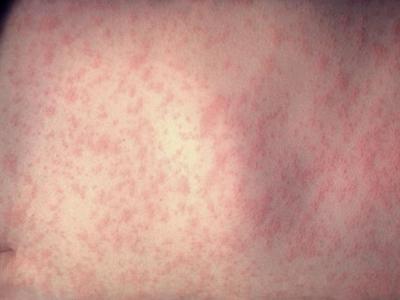Our weekly wrap-up of antimicrobial stewardship & antimicrobial resistance scans
Evidence-based antibiotic list helps in appropriate prescribing
A Johns Hopkins study has determined that selecting an indication for antibiotics from an evidence-based list as opposed to free-text indications increases the odds that antibiotic agents will be used appropriately, according to a study yesterday in the American Journal of Infection Control.
After drug-specific lists of evidence-based indications were integrated into an electronic health system as an ordering hard-stop, the investigators reviewed 155 antibiotic orders to assess the new system. They found that clinical documentation supported the entered indication in 80% of vancomycin orders, 78% of cefepime orders, and 74% of fluoroquinolone orders, and the clinical appropriateness for three antibiotics were 94%, 100%, and 68%, respectively.
They also determined that, when providers chose indications from the evidence-based list as opposed to choosing "other" and entering free text, antibiotic orders were almost six times more likely to be appropriate but also less likely to match clinical documentation (odds ratio, 0.25).
May 31 Am J Infect Control abstract
South Korean study finds a few antibiotics can represent total hospital use
Total antibiotic consumption at a hospital can be represented sufficiently by tracing the use of a few antibiotics, South Korean researchers reported yesterday in a mathematical modeling study in BMC Infectious Diseases.
While tracking antibiotic use at hospitals is the first step in determining the amount of misuse, collecting data on use of all antibiotics can be difficult without an advanced computerized system and dedicated staff. To determine whether the tracking one to three antibiotics could accurately capture overall antibiotic use, the researchers collected data on antibiotic prescriptions from six large Korean university hospitals with good computerized systems from 2004 to 2012. They then built a statistical model in which one to three representative antibiotics are chosen to predict the total antibiotic consumption at the hospital level in 2013.
The researchers found that fluoroquinolones and aminoglycosides were the most representative antibiotics at the six hospitals, followed by beta-lactam/beta-lactamase inhibitors, and fourth-generation and third-generation cephalosporins. The mean production error over 12 months in 2013 with these few antibiotics was only 1% to 3% of the monthly antibiotic consumption.
The researchers say the model could save time and effort surrounding non-essential data collection, allowing medical personnel to concentrate on more important healthcare activities. They suggest hospitals in other countries may follow a similar modeling methodology to find their own representative antibiotics.
May 31 BMC Infect Dis study
Outbreak of VIM-producing Pseudomonas aeruginosa detected in Florida
Originally published by CIDRAP News May 31
Epidemiologists with the Florida Department of Health and the US Centers for Disease Control and Prevention (CDC) reported today on a small outbreak of carbapenemase-producing Pseudomonas aeruginosa at a long-term acute care hospital.
In the latest Morbidity and Mortality Weekly Report (MMWR), the epidemiologists report that on Jul 5, 2017, a patient at an Orange County hospital was found to be colonized with Verona integrin-encoded metallo-beta-lactamase (VIM)-producing P aeruginosa. After the patient was identified and placed on contact precautions, a facility-wide point prevalence survey was conducted and other patients were screened for colonization. From Jul 13 to Sep 22, six additional patients screened positive for colonization with the pathogen. No cases of infection or complications were reported.
The authors note that this is the first identification of VIM-producing P aeruginosa in Florida. VIM-producing P aeruginosa was first reported in France in 1996 and has been documented in several other countries, but it is less common in the United States. VIM is one of the carbapenem-resistance genes that the CDC highlighted in an April Vital Signs report, which found that 221 Enterobacteriaceae isolates collected in 2017 contained VIM and three other carbapenemase genes rarely found in the United States.
VIM genes can transfer their resistance to other bacterial species, but the mechanisms and frequency of exchange are poorly understood. "Thus, identification of colonization with VIM-resistant organisms is a sentinel event that warrants investigation and careful patient management," the authors write.
Measures taken in response to the outbreak investigation included implementing an enhanced prospective surveillance program for P aeruginosa isolates, conducting infection control and response assessments, observing and reinforcing environmental cleaning practices, and implementing outbreak notification signage.
Jun 1 MMWR Notes from the Field
French study finds MRSA rates dropping but other superbugs increasing
Originally published by CIDRAP News May 31
A French team of investigators has determined that national rates of methicillin-resistant Staphylococcus aureus (MRSA) decreased slowly from 2004 through 2016, while rates of extended-spectrum beta-lactamase (ESBL)-positive Escherichia coli and Klebsiella pneumoniae increased markedly, according to a study yesterday in Antimicrobial Resistance & Infection Control.
The researchers analyzed data on 26,486 isolates over the study period from 33 centers across France. From 2004 to 2016, 27.7% of S aureus isolates overall were MRSA, decreasing from 28.0% in 2013 to 23.5% in 2016. The rate of ESBL-positive E coli increased from 3.0% in 2004 to 23.1% in 2012 but then dropped to 19.8% in 2016 (19.8%). The proportion of ESBL-positive K pneumoniae isolates increased from 7.5% in 2004 to 43.6% in 2016.
On a positive note, the authors note that susceptibility of gram-positive isolates to vancomycin, tigecycline, meropenem, and linezolid was well conserved throughout the study period, as was susceptibility of gram-negative isolates to tigecycline and meropenem. But they caution that the spread of multidrug-resistant isolates must be carefully monitored.
May 31 Antimicrob Resist Infect Control study
Investor index gives global food suppliers poor grades on antibiotic use
Originally published by CIDRAP News May 30
A new index that evaluates 60 global food companies on health, environmental, and social issues has found that more than three-quarters of those companies rank as "high risk" on antibiotic stewardship.
The Coller Farm Animal Investment Risk & Return (FAIRR) Protein Producer Index, launched today, is a comprehensive assessment of how the world's largest suppliers of animal protein for human consumption are managing critical sustainability issues, including greenhouse gas emissions, deforestation, animal welfare, water use, and antibiotics management. The goal of the index is to help investors evaluate how these companies—which supply meat for companies like McDonald's, Walmart, and Nestle—are performing on these issues.
The index found that antibiotics management is the most poorly managed of all sustainability risk factors, with 46 of the 60 companies (77%) having no policies or process in place to eliminate the routine use of antibiotics in protein production. A summary of the report's findings notes that as antibiotic resistance continues to emerge, failure to manage antibiotic usage could pose a major risk to these companies.
"On antibiotics alone, FAIRR's research shows that three in four of these companies are ignoring the calls from regulators, health professionals and the financial community to manage and reduce their use of antibiotics," Abigail Herron, global head of investment for FAIRR member Aviva Investors, said in a FAIRR press release. "That failure puts both global public health and their business models at risk."
May 30 FAIRR Index summary of findings
May 30 FAIRR press release
ECDC report documents variable antibiotic consumption in Europe
Originally published by CIDRAP News May 29
A new surveillance report from the European Centre for Disease Prevention and Control (ECDC) shows wide ranges of antibiotic consumption in Europe, with no significant trends in mean consumption observed.
The fourth annual report of the European Surveillance of Antimicrobial Consumption Network (ESAC-Net) is based on antimicrobial consumption data from the community and the hospital sector in European Union/European Economic Area (EU/EEA) countries for the years 2013 and 2014. It shows that population-weighted EU/EEA mean community consumption in 2014 was 21.9 defined daily doses (DDD) per 1,000 inhabitants per day—the same level as 2013—with the highest consumption in Greece (35.1 DDD per 1,000 inhabitants/day) and the lowest in the Netherlands (10.6 DDD per 1,000 inhabitants/day). The most commonly used subgroups of antibiotics were combinations of penicillins, including beta-lactamase inhibitors and penicillins with extended spectrum, followed by macrolides and tetracyclines.
An analysis of EU/EEA data from the previous 5 years did not reveal any significant trend in the mean overall consumption across Europe from 2010 through 2014, but two countries (Cyprus and Sweden) showed a significant decreasing trend in community antibiotic consumption, while a significant increasing trend was observed in the United Kingdom. Significant and divergent trends were observed for two quality indicators measuring consumption of beta-lactamase-sensitive penicillins and combinations of penicillins, including beta-lactamase inhibitors.
In the hospital sector, the population-weighted EU/EEA mean consumption was 2.0 DDD per 1,000 inhabitants/day, with no significant trends in the mean consumption apparent for the previous 5 years. Hospital consumption varied from 1.0 DDD per 1,000 inhabitants/day in the Netherlands to 2.6 DDD per 1,000 inhabitants/day in Finland. The most frequently used subgroups of antibiotics were penicillins, other beta-lactam antibiotics including cephalosporins, and quinolones. A significant increasing trend in the use of carbapenems and polymixins for serious infections was reported in several countries.
May 28 ECDC antimicrobial consumption report
NICU intervention reduces antibiotic use in neonates
Originally published by CIDRAP News May 29
Implementation of a 48-hour automatic stop for empiric antibiotics orders in the neonatal intensive care unit (NICU) was highly effective at reducing antibiotic usage, researchers from the University of Wisconsin reported yesterday in the Journal of the Pediatric Infectious Diseases Society.
The observational double-cohort study measured antibiotic use before and after the autostop initiative was implemented at UnityPoint Health-Meriter, a level-3 NICU where 48-hour empiric antibiotic coverage (ampicillin and gentamicin) is recommended for newborns at risk of infection and duration is open-ended. The intervention limited the antibiotic duration to 48 hours' coverage. The primary objective was to test whether the autostop would decrease total parenteral antibiotic doses per patient or antibiotic doses per patient per day. Secondary objectives were to evaluate length of stay and pharmacy charges.
In the pre-intervention period, 305 of 546 neonates (54%) received admission antibiotics, and 294 of 639 neonates (46%) in the post-intervention period received admission antibiotics. The results showed that after implementation of the autostop initiative, antibiotic doses per patient decreased by 35% and antibiotic doses per patient-day decreased by 25% (P < .0001 for both). The greatest effect was on vancomycin, which is not included in the admission order set but saw a 66% decrease in usage. Basic antibiotic costs decreased, on average, by 31.5% in the year after the initiative was implemented.
In each patient who had positive culture results and clinical signs of infection, proactive continuation of antibiotics was observed without missed doses. No adverse events were observed, and no antibiotic doses intended for a known pathogen were missed.
The findings are significant because antibiotics are the most commonly prescribed medication in NICUs, but determining which newborns need antibiotics based on clinical signs is difficult, and broad-spectrum antibiotic use in neonates confers risk.
"Minimizing unnecessary antibiotic exposure confers benefits, including less morbidity or fewer deaths resulting from antibiotic-resistant bacterial infections," the authors of the study write. "Decreased NICU exposure to antibiotics might decrease resistance and prevent nephrotoxicity, hepatoxicity, hematologic abnormalities, pain, and blood loss during the requisite blood draws for therapeutic monitoring."
May 28 J Pediatric Infect Dis Soc abstract
Study: Modified urine-culture report cuts unnecessary antibiotic treatment
Originally published by CIDRAP News May 29
A study yesterday in Infection Control and Hospital Epidemiology found that modified urine-culture reporting is associated with a significant reduction in inappropriate antibiotic treatment for asymptomatic bacteriuria (ASB), without an increase in adverse events.
The randomized, parallel superiority trial, conducted by researchers with Memorial University of Newfoundland, compared two different methods of reporting urine cultures. The standard report included bacterial count, bacterial identification, and antibiotic susceptibility information, including drug dosage and cost. The modified report informed the physician that significant bacterial growth was detected, but bacterial identification and susceptibility information were withheld unless requested. The researchers hypothesized that the modified report would reduce antibiotic treatment of ASB without increasing untreated urinary tract infection (UTI), pyelonephritis, bacteremia, or death.
The results of positive urine cultures from 110 consecutive inpatients at two urban acute-care hospitals were randomized 1:1 to the standard report (control) or the modified report (intervention). Of the 110 positive cultures, 76 (69.1%) represented ASB rather than UTI, with more UTIs in the intervention arm (36.3%) than in the control arm (25.4%).
According to the intention-to-treat analysis, the proportion of appropriate treatment (UTI treated plus ASB not treated) was higher in the intervention arm in the control arm: 44 of 55 (80%) versus 29 of 55 (52.7%), respectively. Results were similar in the per-protocol analysis. In addition, untreated UTI was more frequent in the control arm than in the intervention arm (14.3% vs. 10%). There was one bacteremia case and two deaths in the intervention arm, but none of these events were considered to have been related to the intervention.
The authors say the results of their proof-of-concept study suggest that modified reporting represents a simple, low-cost, sustainable intervention to reduce antibiotic treatment of ASB, but that safety should be assessed in larger trials before implementation.
May 28 Infect Control Hosp Epidemiol abstract
US survey finds PharmD offerings of stewardship in curricula variable
Originally published by CIDRAP News May 29
A survey 116 PharmD programs throughout the United States found that integration of antimicrobial stewardship into curricula is variable, with considerable differences in activities and topics, according to a new study in the Journal of Antimicrobial Chemotherapy.
The 116 responding programs represent 85% of the 137 Doctor of Pharmacy schools contacted for the survey. Respondents reported that stewardship was incorporated into 68.1% of required courses, 37.1% of elective courses, and 83.6% of experiential education components of the curricula.
The two most common antimicrobial stewardship topics were definitions, principles, and purpose (98.7% of required and 86.0% of elective curricula) and the pharmacist's role in stewardship (93.7% and 83.7%). In experiential education courses, the pharmacist's role in stewardship (96.9%), de-escalation of antimicrobials (96.9%), and antimicrobial dose optimization (95.9%) led the pack. PharmD programs employing a faculty member who specializes in antimicrobial stewardship were more likely to offer related experiential education than programs without antimicrobial stewardship faculty, 88.1% to 71.9%.
May 28 J Antimicrob Chemother study
Inappropriate antibiotics tied to deaths in Elizabethkingia cases
Originally published by CIDRAP News May 29
Another study in the same journal reports that, among 67 patients who had multidrug-resistant Elizabethkingia anophelis, inappropriate antimicrobial therapy was an independent risk factor for mortality, which occurred in 28% of the patients.
The cases were identified from 2005 through 2016 in Taiwan. The 67 patients included 47 men and 20 women, whose median age was 61 years. The researchers identified a comorbidity in 57 (85.1%) of the patients. Among the 67 E anophelis isolates, 40 (59.7%) were isolated from blood. Adjusted odds ratio of inappropriate empirical antimicrobial therapy as an independent risk factor for mortality was 10.01.
Although all isolates were not susceptible to multiple antibiotics, all were susceptible to minocycline. Susceptibilities to ciprofloxacin and levofloxacin were 4.5% and 58.2%, respectively.
The authors conclude, "Minocycline has the potential to be the drug of choice in patients with E. anophelis infections. Additional investigations are needed to determine the optimal antimicrobial agents to treat this life-threatening infection."
In 2016, Wisconsin officials reported 67 E anophelis cases, including 19 fatalities. Most of the isolates tested in that outbreak were susceptible to fluoroquinolones, rifampin, and trimethoprim/sulfamethoxazole, according to the Wisconsin Department of Health Services.
May 28 J Antimicrob Chemother abstract














